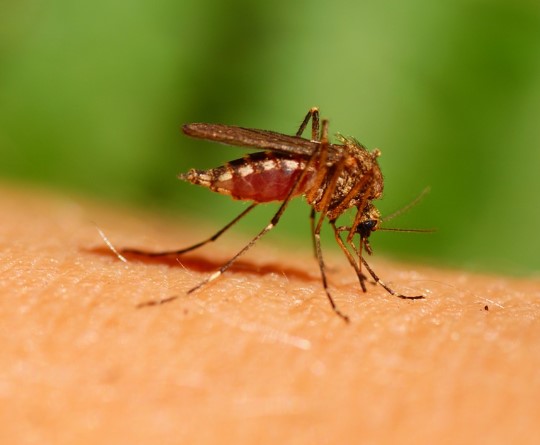Fleas on a rabbit - how to remove and check for a white sock

Fleas, biting parasites, feed on the blood of warm-blooded mammals, including humans, cats, dogs, rabbits and chickens. Flea bites are painful and cause irritation, scratching and the risk of infection through wounds. Since a flea lays about 2000 eggs during its life directly on its owner, about 20-40 per day, and the eggs hatch in 3 weeks, you can imagine the scale of the disaster if you let everything take its course - with a hundred percent probability fleas will come into the house.
Rabbits can become infected with fleas from cats and dogs; the parasites, being incredibly agile, travel in the grass, and therefore are sometimes carried in with collected hay.
Fleas can carry viruses that are fatal to rabbits, such as myxomatosis and rabbit hemorrhagic disease . Both diseases are contagious, fatal and have virtually no cure.
Fleas can also cause anemia and painful wounds in rabbits. Excessive scratching due to flea bites leads to abrasions and infection through them. Symptoms of a severe flea infestation include hair loss, open wounds, and flaky skin due to scratching. Sometimes parasites sit directly on the nose or ears as a sign that the owner does not care at all about the sanitation and HEALTH of the animals in his rabbitry.
In summer, it is advisable to check aviary rabbits for fleas once every two weeks, in winter - once a month. Thesethe insects are dark in color and move quickly through the fur while combing the animal with a fine-toothed comb. They also leave behind “flea droppings,” which resemble small particles of dirt. A common way to test whether specks are flea droppings or just dirt is to place them on a paper towel and drip with water. If a red ring is formed, which is blood, this is the remains of fleas. Having identified parasites in one rabbit, it is necessary to treat the entire livestock and rabbitry.
How to remove fleas from a rabbit
Important warning. Never bathe your rabbit in the first flea shampoo you come across, intended for cats and dogs. If the wrong product is used on the wrong species, it can be deadly.
Additionally, rabbits are highly stressed if placed in water (since in the wild rabbits only swim as a last resort, such as during a flood), and some of the chemicals in flea shampoos and solutions for cats and dogs are very dangerous to rabbits. For the same reason, do not use dog and cat flea collars for rabbits, which also cause suffocation.
At the same time, there are safe flea medications used for cats, dogs, and rabbits. When contacting a veterinarian, they can prescribe two safe remedies for fleas in rabbits - cat drops on the withers "Advantage" (active ingredient imidacloprid) or "revolution" (active ingredient selamectin), these drops are already available for cats and dogs. The veterinarian will calculate the correct dosage and time to re-treat, probably after 3-4 weeks, to ensure that any remaining flea eggs do not hatch. Both products kill insects throughout their entire life cycle, including adult fleas, larvae and eggs. They will also prevent your rabbit from becoming infected again for 2-4 weeks.
In the case when the situation has gotten out of control, or rather the owner has let the rabbitry become a flea mess, the veterinarian can prescribe “capstar” with nitenpyram - a potent remedy that quickly kills fleas within a few hours after administration. Your veterinarian will again advise you on the correct dosage. Taking Capstar is further supplemented with other treatment methods, since it only kills adult fleas. Eggs and fleas in their larval stages remain unharmed.
Returning to the topic of WHAT NOT to treat rabbits for fleas, let’s highlight “frontline” with fipronil - according to veterinarians, rabbit owners often poison their pets with this particular drug, sometimes to the point of death.
Treatment with insecticidal solutions against fleas or boric acid is necessary - spray enclosures and cages, removing the animals to a safe place for at least 24 hours, which is easier to do in the summer. To check if there are still many fleas left in the enclosure, place a white sock there - these insects are attracted to the color white, so if there are a lot of them left, they will gather on the sock.
Read together with it:
- Производство яиц растёт в Липецкой областиЗа девять месяцев 2025 года в хозяйствах всех категорий региона получено 702,4 млн яиц. Это на 8 % больше, чем за аналогичный период прошлого года. Основным производителем и поставщиком пищевого куриного яйца в Липецкой области является сельхозпредприятие, две площадки которого расположены в Липецком округе и Грязинском районе. В день там получают порядка 1,6 млн штук яиц. За три квартала текущего...
- Increasing egg production of laying hens in Kabardino-Balkaria: successes and prospectsThe increase in chicken population has been a key factor in this growth. Currently, the total number of laying hens in the republic has reached 2.3 million, a 14% increase over last year. This demonstrates that local farmers are actively expanding their farms by implementing modern technologies and poultry care methods. The main reasons for increased egg production include: Improved feeding: Farme...
- Indonesia: New rules to protect farm animalsKey Provisions of the New Regulation The new draft law , currently being reviewed, sets ambitious goals. it will cover all categories of animals—from farm animals to pets, service animals, and laboratory animals. The primary focus is on implementing a certification system for farmers who are committed to more humane and sustainable farming practices. This will not only improve animal welfare but a...
- She'll still be in your dreams! A Belarusian woman visited Karelia, and here's what she had to say.Want to know where the Lyudiki and the Quiet Dawns live? What's it like to hide out and forge gates? Our correspondent visited one Russian region and is ready to tell you about it. Warning: after visiting, you'll dream about it for a long time. So goes the republic's unofficial anthem. There are various ways to get to Karelia. One of the most comfortable is by train to St. Petersburg. From Russia'...
- A new forum on animal protection in Russia: problems and solutionsDinara Ageeva, chair of the public organization "Voices for Animals," presented data on 50 cases of animal cruelty on farms across the country over the past three years. Low levels of oversight in private farms remain a problem, as noted by Yulia Melano, advisor to ROSSELKHOZNADZOR . Konstantin Viktorov, Deputy DIRECTOR of the Ministry of Agriculture's Veterinary Department, highlighted issues rel...
- In the Perm region, prices for chicken eggs and meat have increased in a month.Chicken eggs increased in price by 6.4%, while beef and pork increased by 1.9%. Prices for cooked chicken products also increased by 1.6%, by-products by 2.2%, and condensed MILK by 2.9% . Among non-food items, the most significant price increases were for knitted children's hats (by 5.4%) and men's jumpers (by 4.1%). Educational services and student dormitory accommodation also increased signific...
- Egg prices have skyrocketed in Omsk: a dozen now cost over 80 rubles.DespiteDespite price increases , Omsk Oblast still offers lower egg prices than the rest of the Siberian Federal District and RUSSIA as a whole. In some stores, such as Magnit, Pyaterochka, and Samokat, the price of a dozen eggs ranges from 54.99 to 119.99 rubles, depending on the category and manufacturer.......
- Eggshell Color: How Chicken Breed Affects Egg QualityThis is because micronutrients are added to the feed for young hens to promote their growth. As a result, what a hen eats affects the composition of her eggs . Brown eggs are typically laid by dark-colored hens, and white eggs are laid by white hens.
- Jakarta authorities plan to ban the sale of dog and cat meat.The governor of Indonesia's capital, Pramodjo Anung Wibowo, announced plans to ban the sale of dog and cat MEAT for human consumption. The decision was announced after a meeting with representatives of the animal rights organization Dog.MEAT Free Indonesia (DMFI), writes Antara. The governor explained that this ban will be part of measures to curb the spread of rabies in the city. A special gubern...




























































